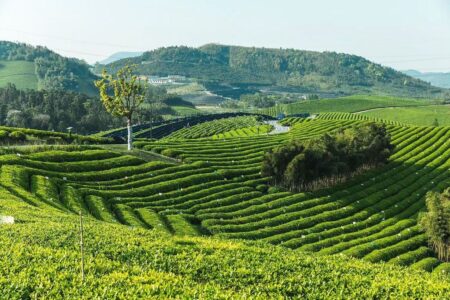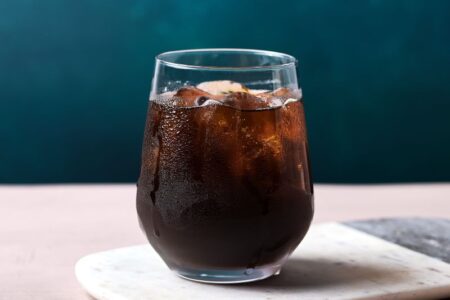When Restaurants Get Coffee Right, They will be Coffeehouses with Food…

It has been my observation over the years that most restaurateurs, if they think about coffee at all, consider it a nuisance at best. Chefs dislike it even more, many have admitted this to me, and will have nothing to do with it; they assign the task of making it to their lowest paid staff members, their busboys.
Perhaps chefs who are classically trained are particularly averse to giving coffee much attention because they know that its original place on the menu was at the end, by itself, as a degustif. Coffee, then, when it first appeared on formal menus, allowed no opportunity for the chef to show off his stuff: it stood alone perhaps more bitter, brooding and mysterious than even the most temperamental chef.
Coffee, then, according to the view of many chefs and restaurant managers, in the context of restaurant dining, can do nothing but tie up a table and staff for a low value sale. Tables are better turned (i.e., made ready for new guests), if the present diners have finished. Or, if the diners occupying that table aren’t ready to leave, those tables can be put to better use by generating revenue from desserts (and possibly dessert wine!) rather than to take them out of service by setting down a few cups of coffee and asking the diners there to relax and enjoy. What’s worse, those patrons may enjoy the coffee so much, they’ll order more. Is it any wonder, then, that even at allegedly fine dining establishments, that the coffee, in its quality and preparation seems calculated to bid adieu to the patrons not by offending, but neither by alluring them to stay.
However, a great cup of coffee in a restaurant may result not from the bold chef or restaurateur attempting to forge his or her own new path, but from the impetus of those most invested in stimulating the appreciation of great coffee: roaster retailers operating their own cafés. It is only natural that operators who have already made the commitment to providing a few hot prepared beverages and the baked goods to go with them will then explore whether additional menu offerings can either add to average sales or help to fill out the gross volume at quieter times during the day.
These roaster retailers operating cafés may decide it is no great leap to expand their daily offerings by featuring a light menu of salads and other easily prepared food items, or by basing their menu on items that can be prepared off-premises in a centralized commissary. What they bring with them, though, is the sensibility that the coffee has to be great, and since they are already out in the market, front and center, as coffee specialists and experts, they have license to charge a premium for their coffee (and usually tea as well). They also don’t need to be sold on the concept that selling a great cup (or pot) of coffee can be profitable, whether it is sold with food or not.
Cafés: Quality Coffee & Good Food
One of the most compelling examples of a restaurant serving a great cup of coffee because its raison d’etre is rooted in that very thing is Lamill Coffee Boutique in the Silver Lake neighborhood of Los Angeles. It is almost as if they took the admonition that many coffee lovers throw at restaurant managers–that if you commit yourself to serving something as basic as a great cup of coffee can you be trusted to do anything right–and stood it on its head by taking the stand that, “We’ve got to do everything right, or you won’t trust us to do the coffee right.” It is, in fact, possible to have a very satisfying experience at Lamill Coffee Boutique without even exploring their list of coffee (and tea) beverages…but you will leave believing that with salads and entrées as good as theirs (such as a Baby Kale, Brussels Sprouts and Farro Salad, or the substantial Seared Flatiron Steak) that they would never skimp on the coffee.
Echoing that same model, appropriately enough in the Echo Park neighborhood of Los Angeles and less than three miles from Lamill Coffee Boutique, is Blue Bottle Coffee’s Sunset Boulevard café, one of its newest outlets. Although not as elaborately committed to fine food as Lamill’s eatery, this is one of Blue Bottle Coffee’s biggest commitments to savory flavors, including Avocado Toast, Asparagus Salad and a Sprouted Grain Bowl. This slightly more-than-basic approach to the menu is probably more appropriate for slightly younger average age of its customers and the neighborhood’s more eclectic tastes and lifestyles.
Los Angeles offers another example of how a restaurant, or, in this case, a small chain of restaurants, might end up serving great coffee. Two of the current partners in a second-generation family restaurant, Hugo’s Restaurant, used to be in the coffee house and coffee roaster/café business. Upon assuming the operation of Hugo’s they used their understanding of coffee to choose a roaster (City Bean Coffee Roasters) and the green coffee base to dial in a coffee they knew would do justice to their other offerings, and to their customers. “I wanted a coffee that out guests would immediately recognize as delicious and satisfying: a roast that was full and sweet without the least burnt notes and a green coffee base that could handle and benefit from full development.
That, with the combination of a strong, fresh brew and clean, well maintained brewing and grinding equipment and I believe we offer one of the best tasting and most approachable cups of coffee in town,” said Tom Kaplan, one of Hugo’s partners, “Our customers expect the best from us in terms of every ingredient we use, and our coffee couldn’t be any different.” The owners and managers of each of these three very different food service establishments know that great coffee can serve as a foundation for a great dining experience and a testament to an overall commitment to quality. They know that a great cup of coffee at the end of a meal, or with breakfast, for that matter, can serve as confirmation the patron is in good hands and the quality and wholesomeness of every ingredient and dish is looked after with care and concern for the diner.
Finally, they know that with proper presentation and training and high standards of sourcing and preparation, from green coffee storage, to roasting, to packaging, freshness maintenance, grinding and brewing, that selling a great cup of coffee can be very profitable. It may even turn out that a previous career in coffee is one of the most promising and beneficial items an aspiring “fine dining” restaurateur might hope to have on their resume.



